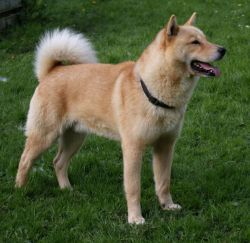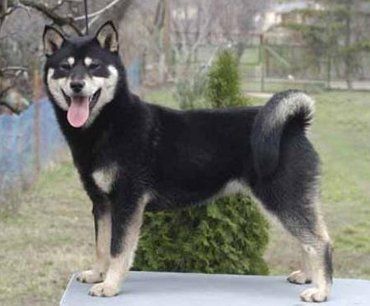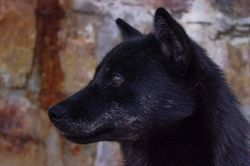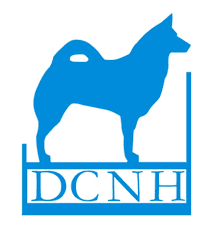Hokkaido - Ainu Ken
Natural monument since 1937
The Hokkaido is the "ice dog" among the Nihon Ken. It inhabits the northernmost region of all and is accordingly well-equipped for this. Small ears prevent unnecessary heat loss, and large paws prevent them from sinking into the snow. They, too, were hunting dogs for bears and hoofed game (deer). Their history is closely intertwined with that of the Ainu (Japanese natives), which is why they are also called Ainu dogs. Previously, there were only oral traditions. Here's a brief detour, as follows, that tells about the birth of the Ainu:
An unknown time ago, a princess washed up on a beach. Alone in her distress, a white dog came to her with food. They lived together ever since and even had a child. It was strong and powerful and the great-grandfather of the Ainu.
It is very common for breeds to be named after their respective regions of origin. There are four main Hokkaido lines. The purest and only one still preserved is the Chitose line. It is characterized by white fur, small ears, and dogs with broad foreheads. All other Hokkaidos are crosses from the remaining extinct lines (Biratori, Atsuma (Azuma), and Yuwamizawa). Brindle Hokkaidos, some of which also had rather pointed muzzles, originate from the Atsuma line.
The Hokkaido has been protected by the Japanese government since 1937 and is now managed by two major registries. These Hokkaido registries are the Hokkaido Ken Hozonkai (Hokkaido Dog Preservation Society) and the Hokkaido Ken Kyokai (Hokkaido Dog Association).
Character:
Hokkaidos are very brave. Even today, this is demonstrated at breeding shows with a live bear (Japan). They are bold and independent, but love nothing more than being close to their humans. They can tend toward SSA (Same Sex Aggression) and require good and consistent training and socialization. Hokkaidos are problem solvers, which can have negative consequences if lacking. They are the loudest and most talkative of the Nihon Ken.
News:
There is only one Hokkaido dog in Europe that is tested and trained for hunting!
Health:
The Hokkaido is also routinely tested for HD, PL, and eyes. Unlike other Nihon Ken, the Hokkaido has good HD results here in the US and Europe, despite the lack of testing in Japan. However, it is more prone to eye diseases such as CEA, PRA, and cataracts. It is highly susceptible to CEA.

Picture of Krisztina Illes
white

http://www.hokkaido-pedigree.com/details.php?id=63212
rot

Picture of Krisztina Illes
black & tan

Photo by Adele Eckelmann, dog by Sabrina Stief
brindle
several different variants or color intensities possible

Bild von
http://www.hokkaido-pedigree.com/details.php?id=63485
sesam
wolfsgraw
ausschließlich im Hokkaido Ken Hozonkai (DOKENHO) zulässig
The following color variations are not explicitly recognized in the standard, but should nevertheless be accepted and not objected to

Bild von
http://www.hokkaido-pedigree.com/details.php?id=63647
einfarbig schwarz
gestromtes b & t
white chest badges

Photo by Krisztina Illes
Urajiro
white with red border/shading similar to "biscuit spots"
- not permitted in the standard -
Sashige (red with black border)
- not permitted in the standard -
Pinto
Spotting and piebaldness
- not permitted in the standard -






